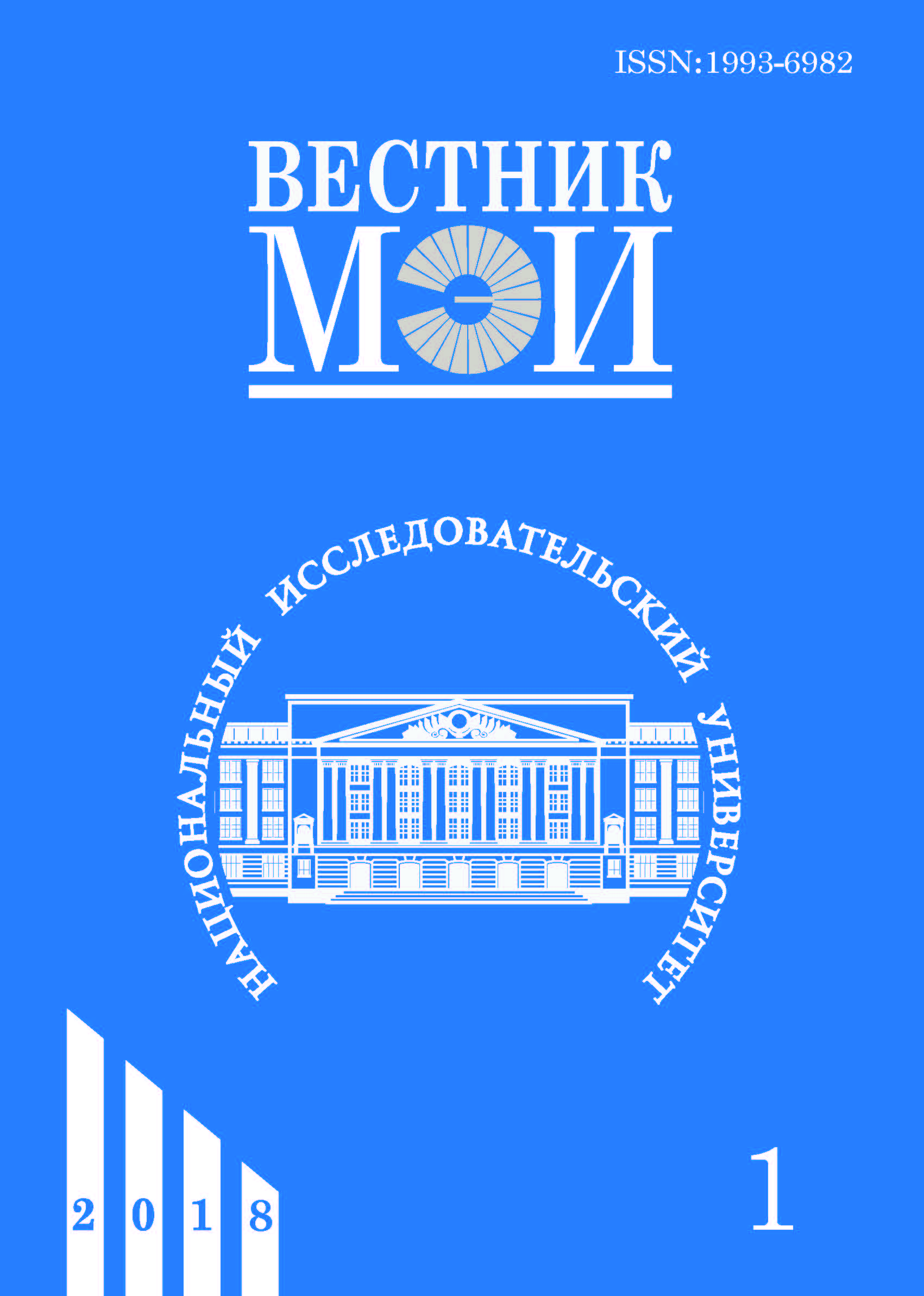Генетический алгоритм оптимизации в задаче распределения нагрузки тепловой электростанции
Аннотация
Рассмотрены генетический алгоритм оптимизации и его использование при распределении суммарных электрических и тепловых нагрузок электростанции между работающими энергоблоками теплоэлектроцентрали (ТЭЦ) и суммарных электрических нагрузок между работающими энергоблоками конденсационной электростанции (КЭС). Необходимость решения данной задачи обусловлена тем, что, с одной стороны, в настоящее время электростанции значительную часть времени работают с нагрузкой ниже номинальной, с другой — тем, что в текущих экономических и экологических условиях экономия топлива и энергосбережение являются объективной необходимостью. В качестве исходных данных использованы математические модели расходных характеристик энергоблоков, полученные по результатам тепловых испытаний и имеющие вид полиномов второго порядка, а на суммарные электрические и тепловые нагрузки и нагрузки отдельных блоков наложены ограничения, определяющиеся технологическим регламентом работы оборудования. Приведен случай, при котором некоторые старшие коэффициенты полиномов, описывающих модели, отрицательны, т. е. метод неопределенных множителей Лагранжа неприменим. Целевой функцией является суммарный расход топлива на работающие блоки. Для заданного состава оборудования электростанции проведены расчеты оптимальных нагрузок энергоблоков с помощью генетического алгоритма, показаны преимущества метода генетических алгоритмов по сравнению с другими применяемыми для решения данной задачи методами, в частности, методом динамического программирования и методом неопределенных множителей Лагранжа. Дана реализация генетического алгоритма применительно к рассматриваемой задаче (задача для КЭС решалась для пяти блоков, для ТЭЦ — для трех блоков). Описаны генерация первоначальной популяции, реализация операции скрещивания, выбраковка наименее приспособленных членов популяции и запись в популяцию новых членов. Для КЭС и ТЭЦ выполнены расчеты для нескольких вариантов суммарных нагрузок. Показано, что применение генетического алгоритма в поставленной задаче позволяет получать экономический эффект за счет определения оптимальных нагрузок энергоблоков. Экономический эффект для КЭС для суммарного часового расхода топлива по сравнению с равномерным распределением нагрузки составил в среднем 2,3 %, для ТЭЦ — эффект достигает 11 % при тех же условиях. Представлены рекомендации по использованию генетического алгоритма при поиске минимума целевой функции.
Литература
2. Kilic A.N. Safety Assurance of NPP with VVER // Proc 9th Intern. Sci. and Tech. Conf. Considerations on Design and Operation of NPP in Flexible (Non-baseload) Mode (Overview of the IAEA Guideline). Podolsk, 2015. P. 28.
3. Аракелян Э.К., Пикина Г.А. Оптимизация и оптимальное управление. М.: Изд-во МЭИ, 2003.
4. Мерзликина Е.И. Оптимизация распределения тепловых и электрических нагрузок между энергоблоками ТЭС с учетом неопределенности исходной информации: дисс....канд. тех. наук. М.: МЭИ, 2004.
5. Щедеркина Т.Е., Мерзликина Е.И. Учет неопределенности исходных данных при решении задачи статической оптимизации // Вестник МЭИ. 2006. № 3. С. 22—28.
6. Болонов В.О., Аракелян Э.К. Оптимальное управление режимами работы оборудования ТЭЦ с ПГУ // Теплоэнергетика. 2007. № 11. С. 69—77
7. Рутковская Д., Пилиньский М., Рутковский Л. Нейронные сети, генетические алгоритмы и нечеткие системы. М.: Горячая линия — Телеком, 2006.
8. Aruna Y., Sanjeev K. Genetic Algorithm for Optimizing Load Distribution on Video on Demand Servers // Intern. J. Sci. Eng. Research. 2012. V. 3. Iss. 6.
9. Sedighizadeh M., Rezazadeh A. Using Genetic Algorithm for Distributed Generation Allocated to Reduce Losses and Improve Voltage Profile // World Academy of Science, Engineering and Technology. 2008. V. 37. Pp. 251—256.
10. Tan K.C., Li Y. Performance-based Control System Design Automation via Evolutionary Computing// Engineering Appl. of Artificial Intelligence. 2001. V. 14. Pp. 473—486.
---
Для цитирования: Мерзликина Е.И., Щедеркина Т.Е. Генетический алгоритм оптимизации в задаче распределения нагрузки тепловойэлектростанции // Вестник МЭИ. 2018. № 1. С. 22—28. DOI: 10.24160/1993-6982-2018-1-22-28.
#
1. Arakelyan E.K. i dr. Metodicheskie Podkhody k Optimal'nomu Upravleniyu Rezhimami Raboty TETS so Slozhnym Sostavom Oborudovaniya. Teploenergetika. 2012;10:12—18. (in Russian).
2. Kilic A.N. Safety Assurance of NPP with VVER. Proc 9th Intern. Sci. and Tech. Conf. Considerations on Design and Operation of NPP in Flexible (Non-baseload) Mode (Overview of the IAEA Guideline). Podolsk, 2015:28.
3. Arakelyan E.K., Pikina G.A. Optimizatsiya i Optimal'noe Upravlenie. M.: Izd-vo MPEI, 2003. (in Russian).
4. Merzlikina E.I. Optimizatsiya Raspredeleniya Teplovykh i Elektricheskikh Nagruzok Mezhdu Energo- blokami TES s Uchetom Neopredelennosti Iskhodnoy In- formatsii: Diss....Kand. Tekh. Nauk. M.: MPEI, 2004. (in Russian).
5. Shchederkina T.E., Merzlikina E.I. Uchet Neopredelennosti Iskhodnykh Dannykh pri Reshenii Zadachi Staticheskoy Optimizatsii. Vestnik MPEI. 2006;3:22—28. (in Russian).
6. Bolonov V.O., Arakelyan E.K. Optimal'noe Upravlenie Rezhimami Raboty Oborudovaniya TETS s PGU. Teploenergetika.2007;11:69—77. (in Russian).
7. Rutkovskaya D., Pilin'skiy M., Rutkovskiy L. Neyronnye Seti, Geneticheskie Algoritmy i Nechetkie Sistemy. M.: Goryachaya Liniya — Telekom, 2006. (in Russian).
8. Aruna Y., Sanjeev K. Genetic Algorithm for Optimizing Load Distribution on Video on Demand Servers. Intern. J. Sci. Eng. Research. 2012;3;6.
9. Sedighizadeh M., Rezazadeh A. Using Genetic Algorithm for Distributed Generation Allocated to Reduce Losses and Improve Voltage Profile. World Academy of Science, Engineering and Technology. 2008;37:251—256.
10. Tan K.C., Li Y. Performance-based Control System Design Automation via Evolutionary Computing. Engineering Appl. of Artificial Intelligence. 2001;14:473—486.
---
For citation: Merzlikina E.I., Shchederkina T.E. A Genetic Optimization Algorithm as Applied to the Power Plant Load Distribution Problem. MPEI Vestnik. 2018;1:22—28. (in Russian). DOI: 10.24160/1993-6982-2018-1-22-28.




